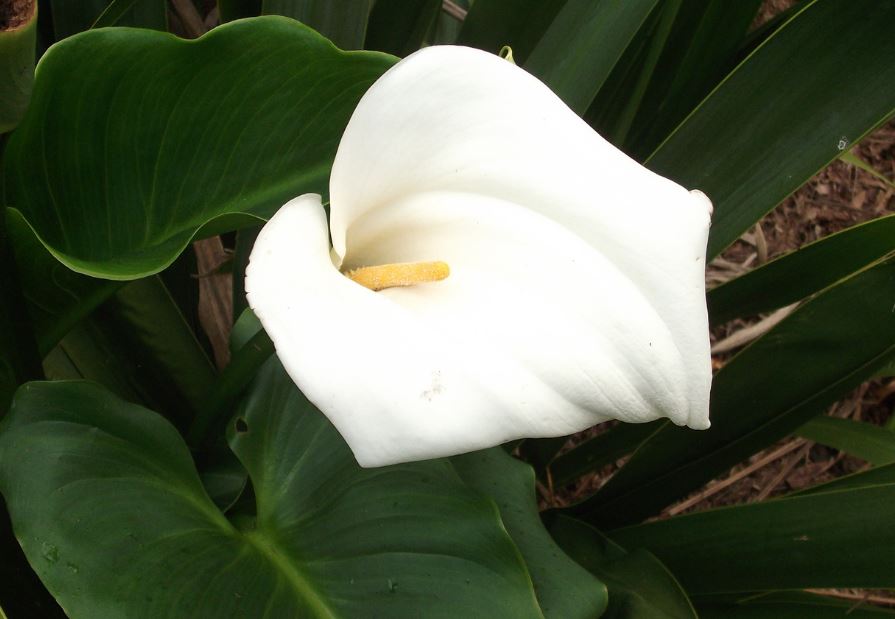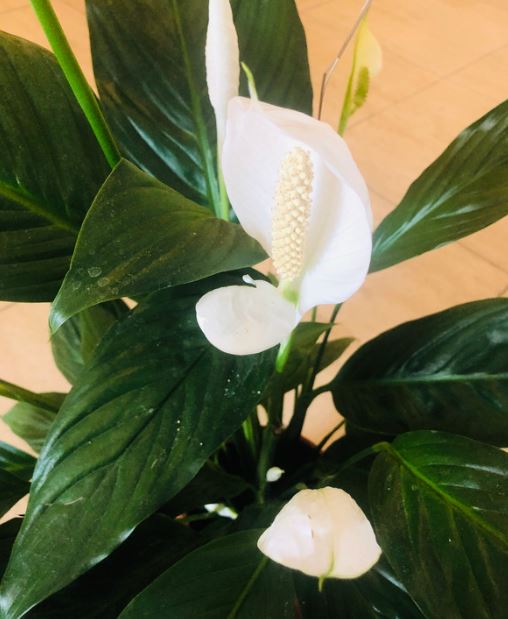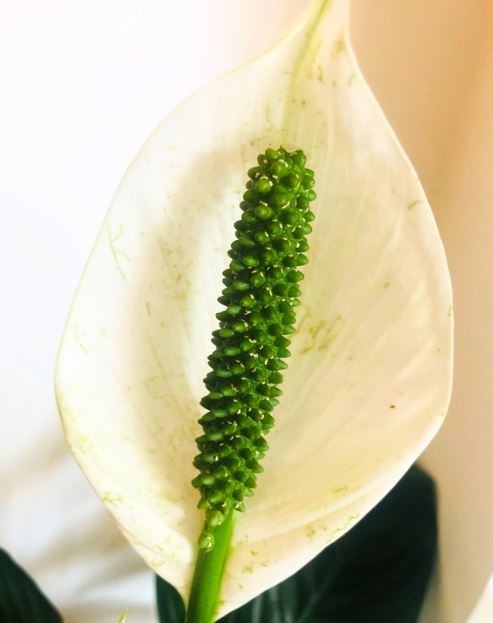Peace Lily: 10 Tips For care & Growing
Welcome to our guide on taking care of peace lilies! If you’ve got one of these elegant plants at home, or you’re thinking about it, we’ve got straightforward tips to keep it healthy and happy.
Whether you’re a plant pro or just starting out, our blog is all about practical advice to make sure your peace lily thrives.
We’ll break down the basics, like how much light it needs, when and how to water it, and the best conditions for it to grow.

From the kind of soil it likes to how warm the room should be, we’re here to simplify the caring process for your peace lily.
So, let’s dive into the essentials and ensure your peace lily becomes a lasting symbol of calm and beauty in your space!
How to care for a peace lily
1. Lighting
Peace lilies exhibit a preference for bright, indirect light, making them well-suited for indoor environments with filtered sunlight.
While they can tolerate lower light levels, direct sunlight should be avoided as it may scorch the leaves.
It’s important to strike a balance, ensuring the plant receives sufficient light for optimal growth without subjecting it to harsh, potentially damaging rays.
Placing the peace lily near a north or east-facing window is ideal, as it provides the gentle illumination these plants thrive on. And if you have a greenhouse, you can move it in there in the summer for an extra boost.
2. Watering a peace lily
Maintaining the right level of soil moisture is fundamental to peace lily care. These plants prefer consistently moist soil, but overwatering can lead to root rot.
To strike the right balance, allow the top inch of the soil to dry out before the next watering session. The frequency of watering may vary depending on factors such as room temperature and humidity levels.

Always use well-draining pots and ensure excess water can escape to prevent waterlogged conditions.
Regularly check the soil’s moisture level and adjust your watering routine accordingly, providing the peace lily with the hydration it needs for robust growth while avoiding the pitfalls of excessive moisture.
3. Humidity for a peace lily
Peace lilies thrive in high humidity, replicating the conditions of their native tropical habitats. If you’re cultivating these plants in a dry environment, it’s beneficial to increase humidity levels around them.
Placing a tray filled with water and pebbles near the peace lily helps maintain a more humid microclimate.
Another effective strategy is using a humidifier in the room, especially during the winter months when indoor air tends to be drier.
Adequate humidity not only promotes lush foliage but also encourages the development of the characteristic white blooms, enhancing the overall health and appearance of the peace lily.
4. Peace lily Temperature
Peace lilies are tropical plants and thrive within a temperature range of 65-80°F (18-27°C). They are sensitive to drafts and cold temperatures, so it’s crucial to shield them from chilly air.
Avoid placing peace lilies near doors, windows, or air conditioning vents where they might be exposed to cold drafts. Additionally, temperatures below 50°F (10°C) can harm the plant, causing damage to leaves and hindering overall growth.
Maintaining a consistently warm environment within the recommended temperature range ensures the peace lily remains comfortable and can focus its energy on healthy foliage and periodic flowering cycles.
Regular monitoring of the surrounding temperature contributes to the long-term well-being of this tropical houseplant.
5. Soil for a peace lily
Choosing the right soil is a critical factor in peace lily care. These plants thrive in a well-draining potting mix that retains some moisture while preventing waterlogging.
An ideal mix includes components like peat moss, perlite, and pine bark, providing a balance between aeration and water retention.

Specialty mixes designed for orchids or general-purpose indoor plants often meet these requirements. When repotting or initially planting a peace lily, selecting a container with drainage holes aids in preventing water accumulation at the roots.
The appropriate soil composition ensures that the peace lily’s root system receives the necessary nutrients and moisture, supporting its overall health and vitality.
6. Fertilizing a peace llly
Regular and balanced fertilization is key to promoting robust growth in peace lilies. During the growing season, typically spring and summer, a liquid fertilizer with equal parts of nitrogen, phosphorus, and potassium can be applied approximately every 4-6 weeks.
This provides essential nutrients for healthy foliage and potential blooming. However, it’s crucial to adjust the fertilization routine during the plant’s dormant phase in fall and winter.
Reducing or halting fertilizer application during this time aligns with the peace lily’s natural growth cycle, preventing potential issues such as nutrient buildup or overstimulation during periods of reduced activity.
7. Pruning a peace lily
Pruning is a maintenance practice that contributes to the overall appearance and health of a peace lily. Regularly inspect the plant for yellow or brown leaves, as these are indicators of aging or potential issues such as overwatering or underwatering.
Gently remove any discolored or damaged leaves with clean pruning shears, cutting them at the base where they meet the main stem.
This not only enhances the plant’s aesthetic appeal by removing unsightly foliage but also redirects energy towards healthy growth.
Pruning can be done throughout the year as needed, with a focus on maintaining a balanced and vibrant appearance for the peace lily.
8. Repotting a peace lily
Repotting is a vital aspect of peace lily care, ensuring the plant has adequate space for root expansion and access to fresh, nutrient-rich soil. Generally, repotting is recommended every 1-2 years or when the peace lily outgrows its current container.
When undertaking this task, carefully remove the plant from its pot, gently shake off excess soil, and inspect the root system.

If roots are circling the pot or appear crowded, it’s an indication that repotting is necessary.
Choose a container that is one size larger than the current one, providing room for future growth. Use a fresh potting mix with well-balanced nutrients, promoting a healthy transition for the peace lily into its new environment.
9. Pest Control
Vigilance against common pests is crucial to maintaining a healthy peace lily. Keep a watchful eye for signs of infestation, such as discolored or distorted leaves, webbing, or the presence of tiny insects.
Common pests affecting peace lilies include aphids, spider mites, and scale insects. If an infestation is detected, prompt action is necessary to prevent damage to the plant.
Insecticidal soap or neem oil, applied according to the product instructions, is an effective and plant-friendly solution for controlling pests.
Regularly inspecting the plant and addressing pest issues promptly contributes to the overall well-being of the peace lily, preventing long-term damage and promoting a thriving, pest-free environment.
10. peace lily Flowering
The characteristic white blooms of the peace lily are a delightful feature, and encouraging flowering requires attention to specific care aspects.
Adequate lighting is essential, as peace lilies typically bloom more prolifically in bright, indirect light. If the plant is not flowering, assess its light exposure and consider relocating it to a spot with slightly higher illumination.
Additionally, ensure consistent watering and fertilization during the growing season to provide the necessary nutrients for bloom development.
Patience is key, as peace lilies may take some time to establish before producing flowers.
By consistently meeting the plant’s care requirements and addressing factors like light and nutrition, you can enhance the likelihood of enjoying the elegant blooms that make the peace lily a popular choice among indoor plants.

In closing: Thank you for joining us on this journey through the care tips for your peace lily. We hope you found these insights helpful in creating a thriving haven for your elegant companion.
If you have any questions, experiences to share, or additional tips of your own, we’d love to hear from you! Drop your thoughts in the comments below, and let’s continue to grow together. Happy gardening! 🌿✨
Next, check out our list of the best house plants for low light. And if you need some new plants for your house, check out these top selling plant shops on Etsy.






